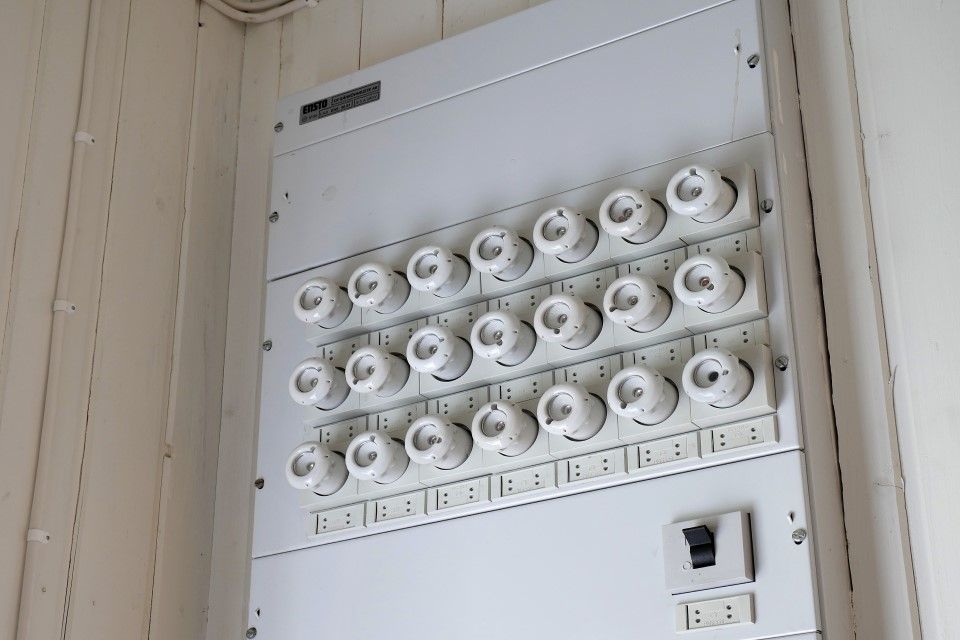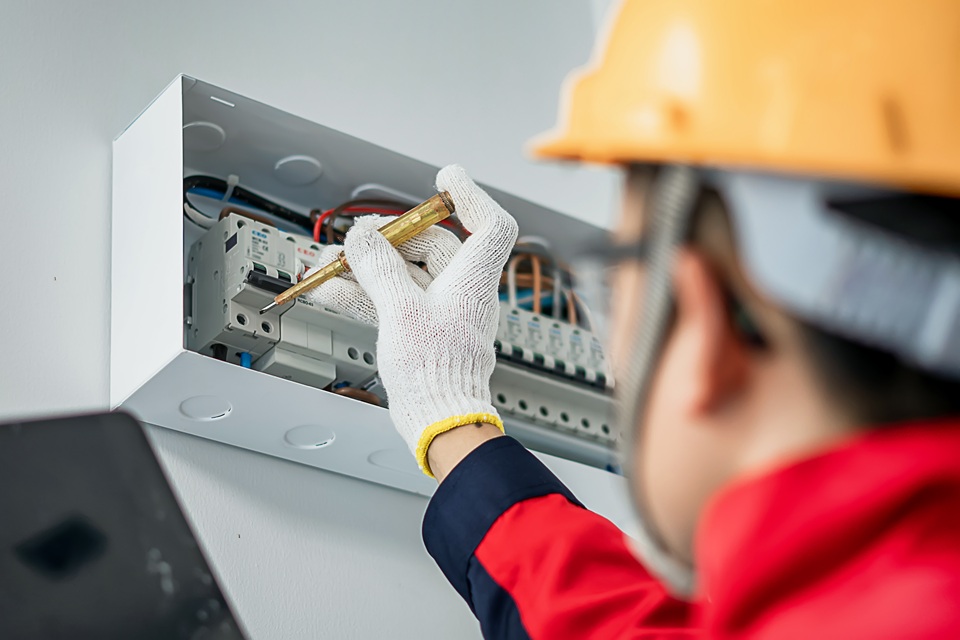What's the Cost to Replace a Consumer Unit?
Do you have an outdated consumer unit?
If so, you may need to pay for a fuse box upgrade to ensure that it is safe and compliant.
This will also help you reduce your energy usage, resulting in lower energy bills. Upgrading your fuse box will require the help of a qualified electrician who will check your old fuse box and ensure that the new consumer unit meets Part P building regulations.
A new consumer unit can help lower your energy costs.
If you're ready to get a quote for a new consumer unit, we can also help connect you with local electricians.
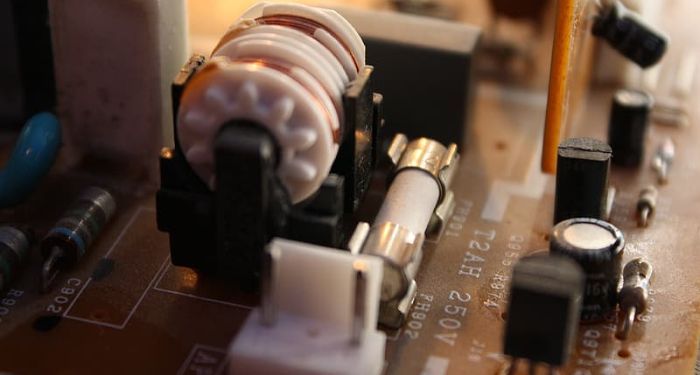
But how much will replacing a fuse board cost?
The average cost of replacing consumer unit is around £325 to £370 for a six-circuit consumer unit, £330 to £385 for a ten-circuit fuse box, and for a twelve-circuit consumer unit you should expect to pay around £380 to £450.
The average cost of replacing a fuse box can depend on the size of the unit.
New Consumer Unit Prices in 2025
Check out the table below to find out how much a replacement consumer unit will cost you:
| Type of Fuse Box | Average Price Range |
|---|---|
| Split-Load Consumer Unit | £90-£200 |
| Garage Consumer Unit | £34-£68 |
| Fully Loaded Consumer Unit | £40-£200 |
| Dual-Split Load Consumer Unit | £90-£200 |
| Domestic Switch Fuse | £70-£80 |
- What's the Cost to Replace a Consumer Unit?
- 7 Reasons You Might Need a Fuse Board Upgrade
- What Are the Additional Costs of a New Consumer Unit?
- What are the Supply Costs of a New Consumer Unit?
- Labour Costs to Replace Consumer Units
- How Long Does It Take to Upgrade a Fuse Board?
- Cost of Removing a Fuse Board
- FAQs
7 Reasons You Might Need a Fuse Board Upgrade
Upgrading your fuse board — also known as a consumer unit is often essential for safety, compliance, and to support modern electrical demands.
1. Outdated or Obsolete Equipment
Old fuse boards with rewirable fuses lack modern safety features like mini circuit breakers (MCBs) and Residual Current Devices (RCDs), and may no longer meet current British Standards.
2. Absence of RCD / RCBO Protection
Modern consumer units are equipped with RCDs or RCBOs to protect against electric shock and fire, detecting faults within 0.3 seconds.
3. Increased Electrical Load
New electrical appliances such as electric car chargers, electric gates and induction hobs require additional circuits and greater capacity, which are usually not supported by older units.
4. Fire & Electrical Safety
Older fused boards can overheat and fail to trip promptly, increasing fire risks to your home. Modern metal‑clad units with surge protection are much safer.
5. Legal & Insurance Requirements
Building changes, rental regulations, or insurance policies often require a modern consumer unit which is compliant with Part P of building regs and BS7671:2018+A2:2022.
6. Frequent Tripping or Faults
If you experience regular electric outages, flickering lights, buzzing sockets, or overheating, it could signal failing protection mechanisms and outdated equipment.
7. Easier Maintenance & Future Upgrades
Modern units with labelled breakers and modular designs help simplify diagnostics and allow for future expansions, unlike old fuse wire systems.
To determine if you truly need an upgrade, it is best to get a qualified electrician to carry out an Electrical Installation Condition Report (EICR). This report will reveal any potential hazards, and will recommendation if an upgrade to your consumer unit is required.
What Are the Additional Costs of a New Consumer Unit?
If you are paying to get your fuse board upgraded, you may wish to spend some extra money on additial electrical work around your home. Here are some example jobs and costs to consider:
New Plug Socket Cost
Another common electrical job involves installing a new plug socket. The cost of this will depend on the type of plug socket you choose, for example, a switched socket costs around £1 to £120.
This type of socket usually has one or two outlets with a switch to turn the socket on or off.
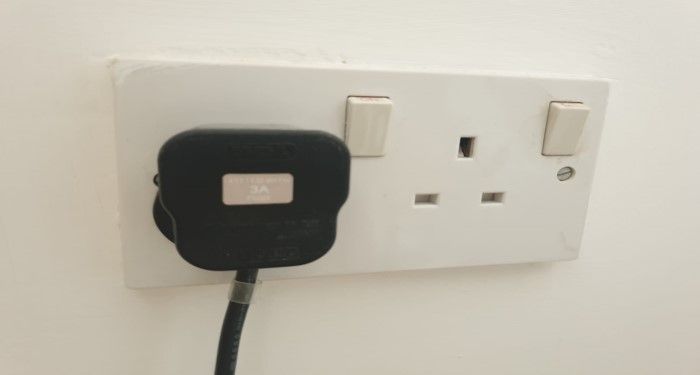
More advanced plug sockets include USB outlets which feature typical sockets along with USB outlets. The average cost for this socket type is normally around £8 to £120.
Another advanced plug outlet is a smart socket, which can be controlled from a smart hub or smartphone which helps you reduce electrical usage. Smart plug sockets are normally priced at £20 to £190.
Wire Relocation Cost
Fuse board replacement cost may also involve relocating wiring. You may also need to have it moved if you are renovating, for instance, you may decide to turn your electrical cupboard into a bathroom, so under building regulation, it must be moved.

The cost to relocate your fuse board is normally around £200 to £550.
New Light Switch Cost
Another element you may want to consider is the price of installing new light switches, which cost around £30 to £60 to install.
The supply cost, however, will vary depending on the type of light switch you choose.
Avearge Light Switch Supply Costs:
- Budget rocker switch - £3 to £4.
- 20-amp switch - £3 to £8.
- Toggle switches - £3 and £20.
- Dimmer switches - £5 to £180.
- Smart dimmer switches - £160 to £200.
If you however want to move the location of your light switch expect to pay between £130 - £170in labour fees.
House Rewiring Cost
When conducting electrical checks, an electrician may also find that your house wiring is out of date and you will, therefore, need a complete rewiring. The cost to rewire your house will depend on the size and type of property you have, as well as the condition of the wiring.
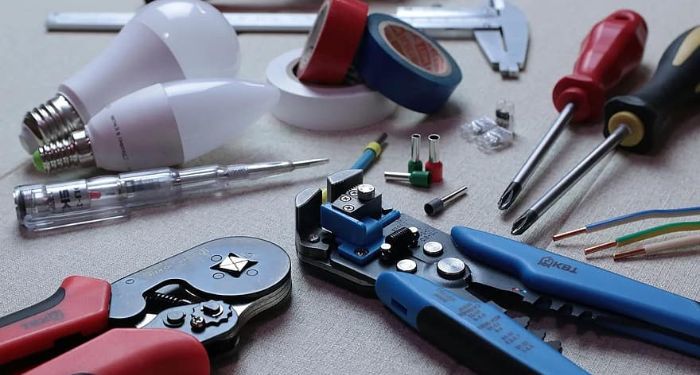
Average Costs:
- Small one-bedroom flat - £2,000 to £2,500.
- Two-bedroom terraced home - £2,000 to £3,500.
- Three-bedroom semi-detached house - £3,000 to £4,500.
- Four-bedroom detached home - £3,500 and £5,500.
What are the Supply Costs of a New Consumer Unit?
If you plan on installing a consumer unit yourself, or wish to purchase it yourself, then you should consider the following supply cost of a new consumer unit:
Split-Load Consumer Unit Cost
One of the more common types of consumer units found in homes is the split-load model. This design features miniature circuit breakers (MCBs) located on the side where the residual current devices (RCDs) are installed. Meanwhile, residual current breakers with over-current protection (RCBOs) are positioned closer to the main switch. This configuration offers enhanced safety by isolating circuits more effectively, helping to protect against electrical faults and reducing the risk of fire.
In terms of pricing, split-load consumer units generally fall within the range of £90 to £200. The cost can vary depending on the number of circuits included, the quality of components, and the brand chosen. This type of unit provides a good balance between cost and protection, making it a popular choice for upgrading domestic fuse boards.
Upgrading to a split-load consumer unit is often recommended during electrical rewiring or when adding new circuits to a property, as it allows better control over electrical distribution and enhances your homes safety.
Garage Consumer Unit Cost
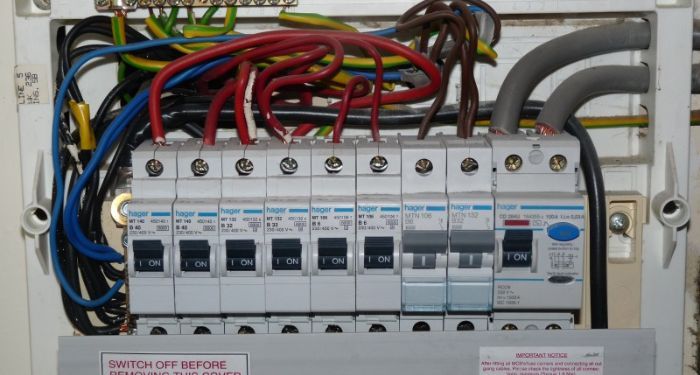
A garage consumer unit is a more compact and specialised type of consumer unit designed primarily for use in outbuildings such as garages, garden sheds and extensions. These units allow the outbuilding to have its own dedicated power supply, which is especially useful when the main consumer unit in the house is located too far away to provide a safe or efficient electrical feed.
Typically, garage consumer units are smaller and simpler than main household units but still include essential safety features such as miniature circuit breakers (MCBs) and residual current devices (RCDs) to protect the circuits. This ensures that even isolated or less frequently used spaces meet modern electrical safety standards.
In terms of cost, garage consumer units are generally priced between £34 and £68, making them an affordable solution for powering separate buildings. The exact price depends on the number of circuits, brand, and additional features such as weatherproof enclosures if the unit is installed externally.
These consumer units are often installed alongside a dedicated circuit from the main electrical panel. Ideal for powering lighting, sockets, or specific appliances like electric vehicle chargers or tools in garages or workshops.
Choosing the right consumer unit is essential for ensuring your home’s electrical safety and reliability. The right unit not only protects your circuits but also provides flexibility for future upgrades and additions.
Fully Loaded Consumer Unit Cost
This type of consumer unit has two sets of residual current devices (RCDs) and miniature circuit breakers (MCBs), which provide enhanced protection and flexibility for electrical circuits throughout a property. Often referred to as a dual RCD or fully loaded consumer unit, it is designed to handle multiple circuits with individual protection.
A fully loaded consumer unit is ideal for larger homes or properties with higher electrical demands, as it can accommodate more circuits and provide selective fault isolation. This means that if a fault occurs on one circuit, only the affected circuit will be disconnected, while the rest of the system continues to operate normally.
A fully loaded consumer unit typically costs between £120 to £300, depending on the number of circuits included, brand, and additional features like integrated surge protection or advanced RCBOs (residual current breakers with over-current protection).
Dual-Split Load Consumer Unit Cost
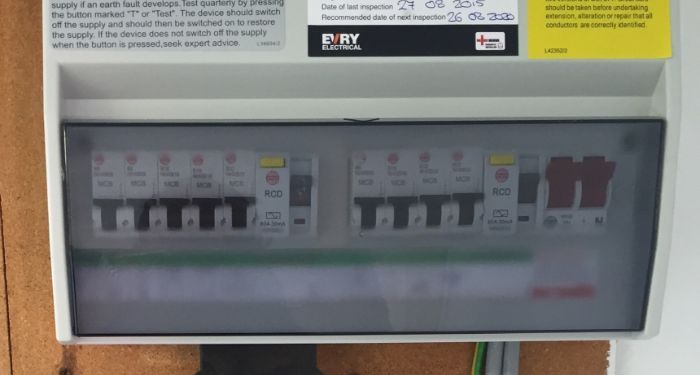
Dual-split load consumer units provide separate power distribution for different areas of a property. Most commonly used to independently supply electrical installations upstairs and downstairs. This setup enhances safety and convenience by allowing the circuits on each floor to be isolated individually in the event of a fault or maintenance work.
These consumer units feature two sets of residual current devices (RCDs), each protecting a distinct group of circuits. This separation helps reduce the likelihood of a total power outage across the entire property. Each RCD typically feeds its own set of miniature circuit breakers (MCBs), which manage and protect individual circuits against overload and short circuits.
A dual-split load consumer units typically costs from £90 to £200. This type of consumer unit is a popular choice for medium to larger homes where managing power supply across multiple floors or zones is necessary.
Domestic Switch Fuse Cost
A domestic switch fuse box is a compact type of consumer unit commonly used as a secondary main switch within a property. Typically, it controls a single circuit that connects to the sub-mains, serving as an additional point of isolation or protection for specific parts of the electrical system. This could be an outbuilding or a particular zone within your home.
This type of fuse box is relatively simple in design but plays a crucial role in ensuring safety by allowing quick disconnection of power to the sub-main circuit when needed. It is often installed alongside a main consumer unit to provide an extra layer of control and protection, especially in larger properties or homes with separate electrical zones.
The cost for a new domestic switch fuse box generally ranges between £70 and £80. This makes it a cost-effective solution for enhancing electrical safety without the need for a full consumer unit upgrade. However, it’s important that installation and any related electrical work are carried out by a qualified electrician to ensure compliance with current safety regulations.
Labour Costs to Replace Consumer Units
A new consumer unit cost also includes the price to hire an electrician, which will vary depending on the size of the job.
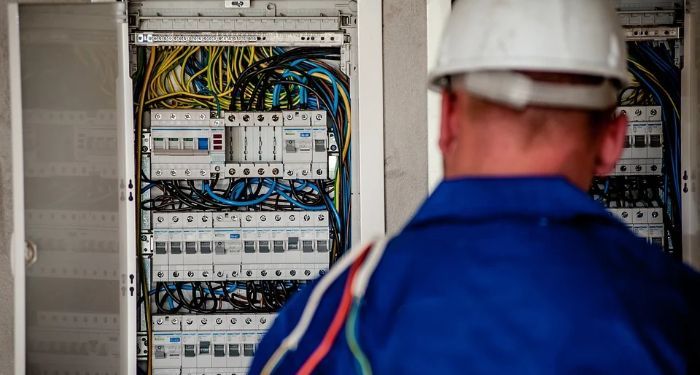
If you live in a one-bedroom flat, then a qualified electrician may charge around £325 to £370 to install a small consumer unit with six circuits, while a two-bedroom terraced house usually costs around £330 to £385 for a ten-circuit unit.
The cost of a new consumer unit in a three-bedroom semi-detatched or a four-bedroom detached home should be between £380 to £450 in labour for a twelve-circuit system.
How Long Does It Take to Upgrade a Fuse Board?
Another factor you need to consider is the time it takes to upgrade an old fuse board, as the larger the unit, the longer it takes to install.
It also depends on the size of the property, as a six-circuit unit in a one-bedroom flat normally takes around 4 to 5 hours. The time frame to install a ten-circuit fuse box is around 5 to 6 hours.
Larger consumer units with twelve circuits which are normally used in a three-bedroom semi or four-bedroom detached home tend to take around 6 to 7 hours to install.
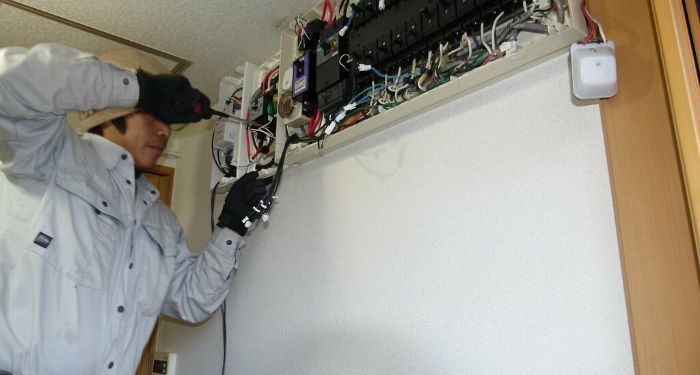
You may also have to consider time spent on additional work, such as rewiring which can take around 4 to 9 days to complete depending on the size of the house. If you need any new light switch or sockets moving, then this can also add around 1 to 4 hours to the job.
Cost of Removing a Fuse Board
If you need to have your fuse board removed and relocated or you have a consumer unit in your garage or shed that you no longer use, then you should consider having it removed.
This should cost around £50 to £120 to remove and dispose of the unit, although this may vary depending on the size of the fuse box.
If you want to save money, you could consider getting rid of your fuse board yourself by dropping it off at a household waste recycling centre.
FAQs
Q: What is a consumer unit?
A: A consumer unit or a fuse box is a form of distribution board which is used to control and distribute electricity to installations in your home.
They usually contain a main switch, circuit breakers and residual current devices which are used to power electrical installations while also preventing electrical complications.
Q: What size consumer unit do I need?
A: The size you choose will depend on the size of your home along with how many electrical devices you have. For example, if you live in a one-bedroom flat you may only need a small consumer unit with six circuits, while a four-bedroom detached property may require twelve or more circuit to control and power your home.
Q: Can I have more than one consumer unit?
A: It is possible to have multiple consumer units, although you can only have one main fuse box. If you require a consumer unit in an outbuilding such as a shed, garage or extension, then you can have a small fuse box installed and connected to the main supply.
Q: Where can a consumer unit be installed?
A: In order to comply with building regulations, a consumer unit must be installed 450mm to 1200mm from the floor level, and the switches must be 1350mm and 1450mm above floor level. It is also important that your consumer unit must be fitted in a dry and secure place that is away from any water installation. It should also be installed in an area where it can be easily accessed for repairs and maintenance.
Q: When does a consumer unit need replacing?
A: If you have an outdated consumer unit with a wooden back, then this will need to be replaced in order to maintain compliance. You may also need to have your consumer unit removed if it trips regularly.
It will also need to be replaced if your lights or electrical installations are flickering, as this can be a sign that the consumer unit is becoming inefficient and will need to be upgraded.

